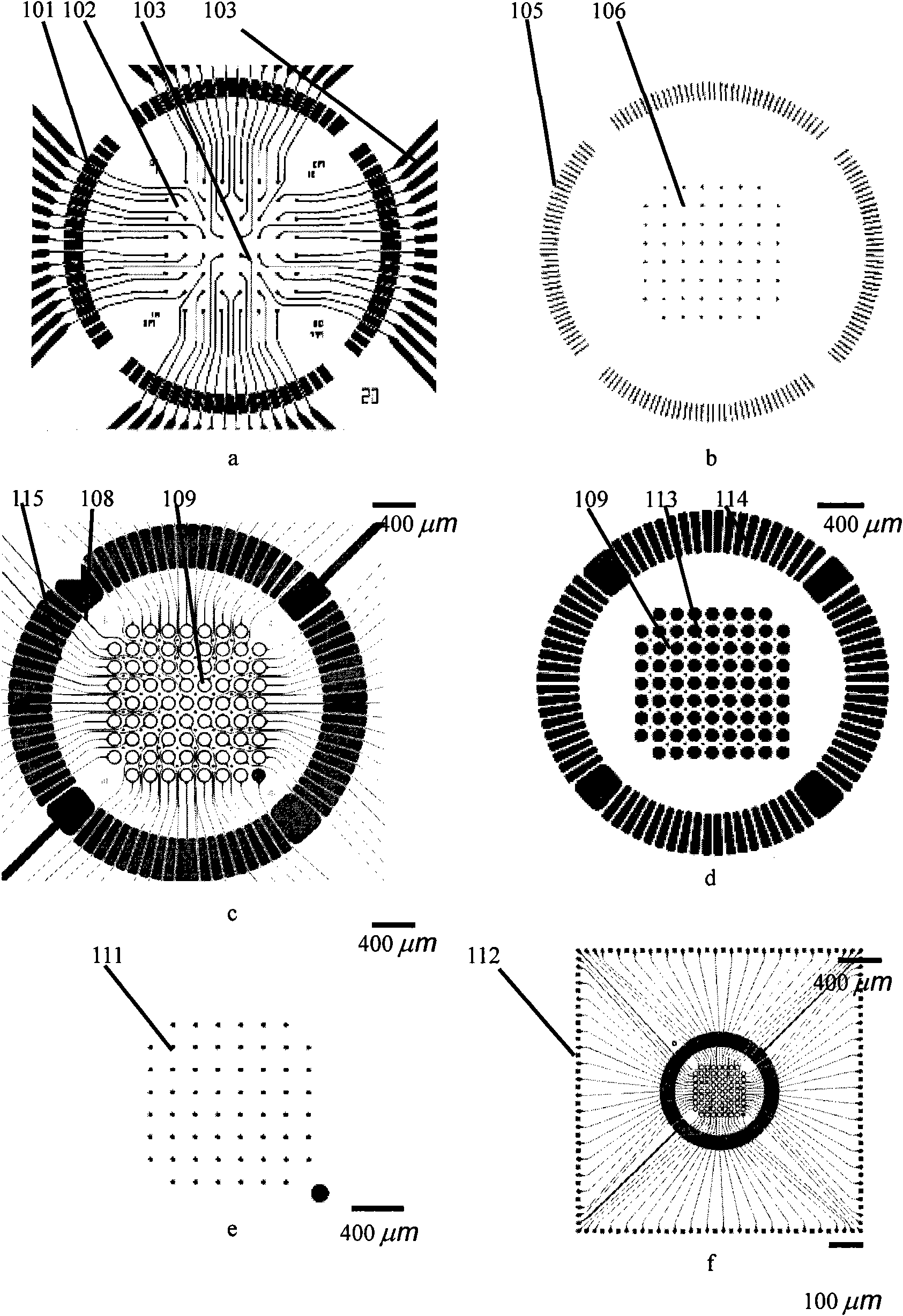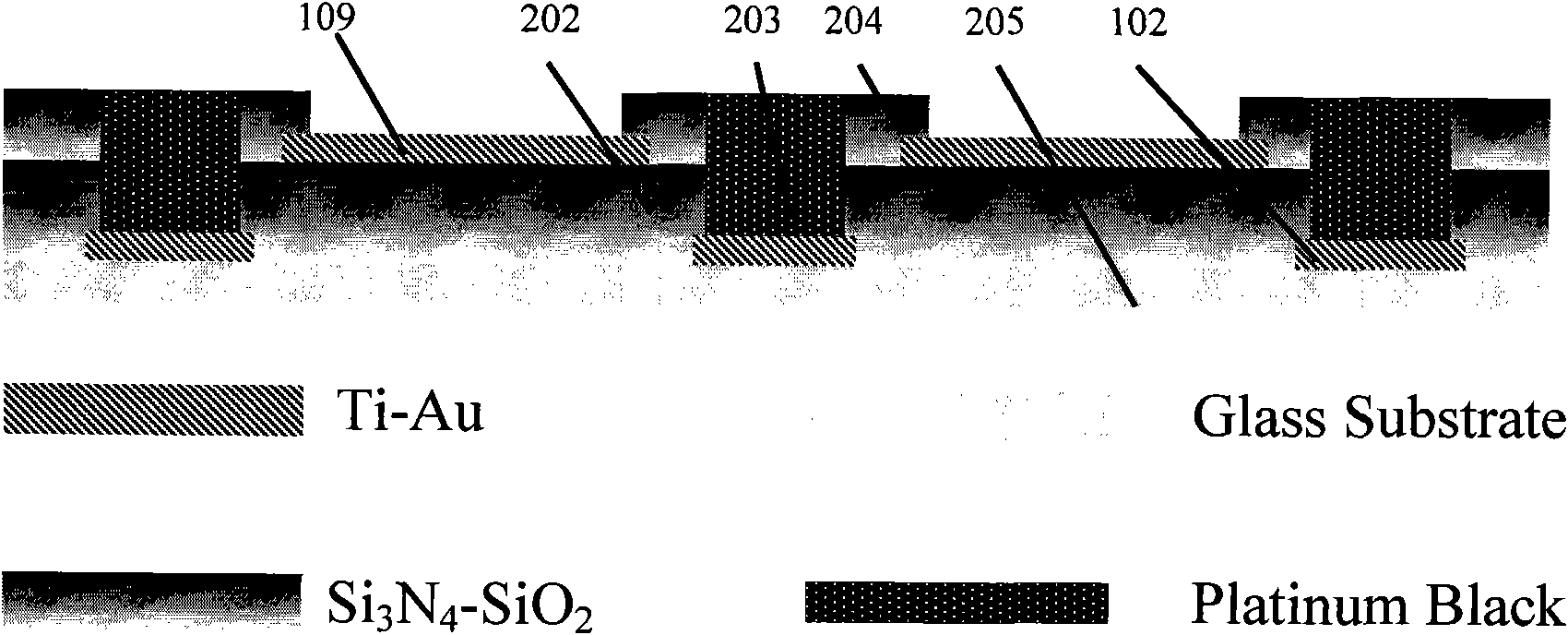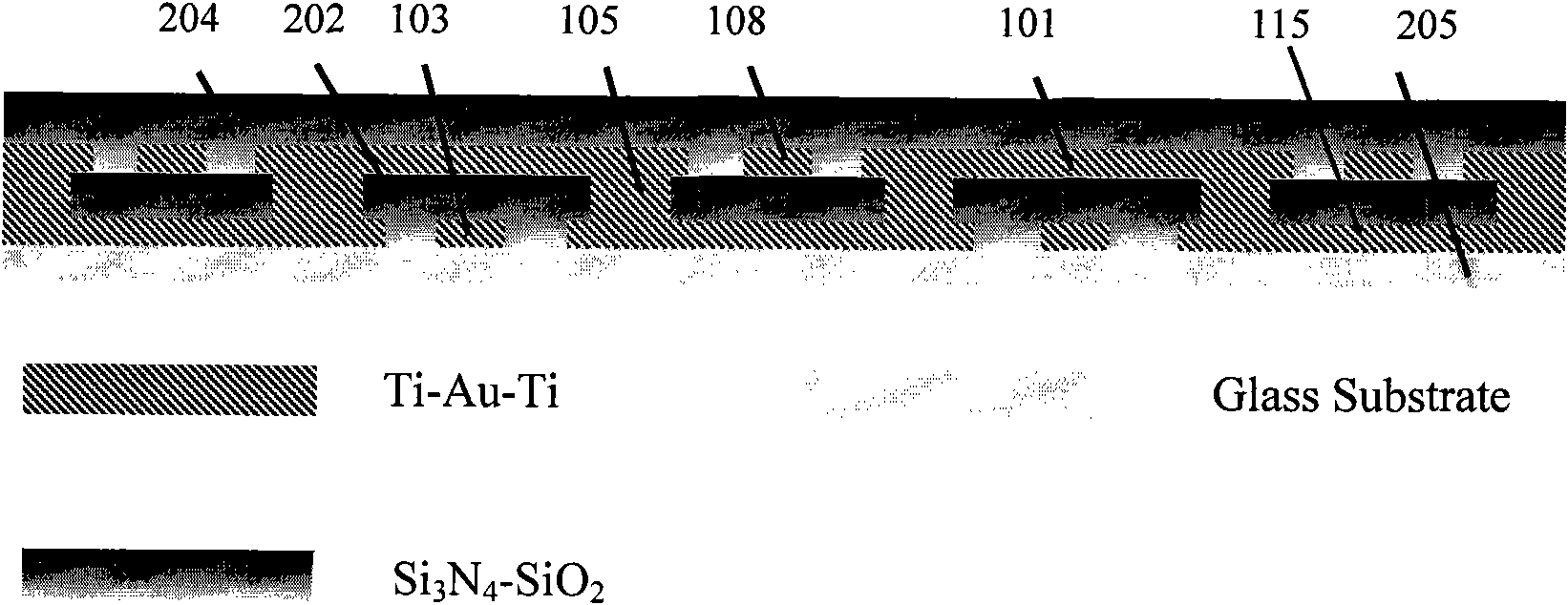Microelectrode array device and special device for cell manipulation and electrophysiological signal detection
A microelectrode array, electrical signal technology, applied in measurement devices, biological tests, applications, etc., can solve problems such as distance, cell damage, and difficulty in precise alignment of neural networks and microelectrode arrays.
- Summary
- Abstract
- Description
- Claims
- Application Information
AI Technical Summary
Problems solved by technology
Method used
Image
Examples
Embodiment 1
[0042] Embodiment 1. Microelectrode array device 903 for cell manipulation and electrical signal detection
[0043] The microelectrode array device 903 for cell operation and electric signal detection of the present invention is composed of a chip unit 501 , a printed circuit board 401 and a bottomless culture cavity 506 .
[0044] 1) Prepare the chip unit 501 of the microelectrode array device
[0045] figure 1 a to e are the mask layouts for processing the chip unit 501 of the micro-electrode array device. figure 2 is a cross-sectional view of the electrode area of the chip unit 501, image 3 It is a cross-sectional view of the lead area of the chip unit 501. The micromachining of the chip unit is as follows:
[0046] (1) The slide 205 used is cleaned;
[0047] (2) sputtering the first metal layer, the layer structure is Ti-Au-Ti;
[0048] (3) Measuring electrodes 102, leads 103, pads 112 and ground electrodes 101 with the first mask plate a photolithography, and ...
Embodiment 2
[0068] Embodiment 2, the device that is used for cell operation
[0069] The device for cell operation of the present invention includes the microelectrode array device 903 prepared in Example 1 and a metal fixture; the preparation and assembly methods of the metal fixture are as follows:
[0070] Figure 9 It is a schematic diagram for the assembly and use of the supporting metal fixture, which consists of three parts: the metal shell 904 , the printed circuit board 905 of the metal fixture and the cover plate 901 . The printed circuit board 905 soldered with pogo pins is fixed on the hollow bottom of the metal casing 904 by four screws, the microelectrode array device 903 is placed on the pogo pins, pressed by the cover plate 901, and locked with pins 902.
[0071] Figure 10 Layout of the printed circuit board 905 for the metal fixture. Among them, 1001 is the edge of the printed circuit board, 1002 is the positioning hole and uses it to fix the printed circuit board of ...
Embodiment 3
[0075] Example 3. Application of the device for cell localization and electrical signal detection
[0076] Figure 14 It is a flowchart of localization and detection of cells by negative dielectric force. First, the cell (such as nerve cell) suspension is added to the culture cavity 506 of the device for cell positioning and electrical signal detection; then positioning signals are applied to different numbers of positioning electrodes to generate dielectric force, the difference is that both Signals can be applied to all positioning electrodes, signals can only be applied to some specific positioning electrodes, or no signal can be applied at all as a control, so that the cells can form different network patterns. The dielectric force can be generated by alternating current or direct current, and the alternating current signal can work in a wide frequency range (for example, 500Hz to 50MHz); and the positioning signal can always be applied to the positioning electrode, or it...
PUM
 Login to View More
Login to View More Abstract
Description
Claims
Application Information
 Login to View More
Login to View More - Generate Ideas
- Intellectual Property
- Life Sciences
- Materials
- Tech Scout
- Unparalleled Data Quality
- Higher Quality Content
- 60% Fewer Hallucinations
Browse by: Latest US Patents, China's latest patents, Technical Efficacy Thesaurus, Application Domain, Technology Topic, Popular Technical Reports.
© 2025 PatSnap. All rights reserved.Legal|Privacy policy|Modern Slavery Act Transparency Statement|Sitemap|About US| Contact US: help@patsnap.com



